
The William Edwards Farmhouse is a historic residence near Cincinnati in the village of Newtown, Ohio, United States. One of the area's leading early farmhouses, it has been designated a historic site.

The Miller–Leuser Log House is a historic eighteenth-century log cabin near the city of Cincinnati in Hamilton County, Ohio, United States. One of the oldest houses in the area, it has been named a historic site.
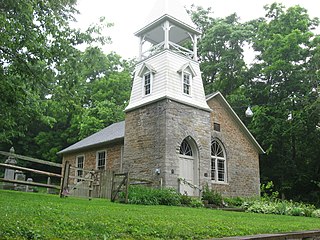
The United Brethren in Christ Church, also known as "File Mile Chapel", is a historic church building located southeast of Cincinnati in Anderson Township, Hamilton County, Ohio, United States. Built in 1844, it is a stone building with a stone foundation and a slate roof. It was the house of worship for the oldest Church of the United Brethren in Christ congregation in southeastern Hamilton County, which became the mother of other congregations: some of its members later left to found other United Brethren in Christ churches elsewhere in Hamilton County and in the surrounding community.

The Anderson–Shaffer House is a historic residence in the city of Hamilton, Ohio, United States. Constructed in the middle of the nineteenth century, it was home to a succession of owners in its early years, and it has been named a historic site.

Matthew Hueston House is a historic house located near Hamilton, Ohio.

The Symmes Mission Chapel was a historic church building in the city of Fairfield, Ohio, United States. A simple structure constructed in the 1840s, it was named a historic site in the 1980s, but it is no longer standing.

The Martin Marmon House is a historic house near the village of Zanesfield in Jefferson Township, Logan County, Ohio, United States. Built by pioneer settler Martin Marmon around the year 1820, it is one of the best remaining examples of Quaker architecture in the area.

St. John the Baptist Catholic Church is a historic Roman Catholic church in Marion Township, Mercer County, Ohio, United States. Located in the unincorporated community of Maria Stein, it is the home of an active congregation and has been recognized as a historic site because of its well-preserved late nineteenth-century Romanesque Revival architecture.

The Nativity of the Blessed Virgin Mary Catholic Church is a historic Catholic church in Cassella, an unincorporated community in Mercer County, Ohio, United States. One of several Catholic churches in Marion Township, it has been designated a historic site because of its well-preserved nineteenth-century architecture.

The Canton Township MPS is a multiple property submission, listed on the National Register of Historic Places in 2003. A multiple property submission is a group of related structures that share a common theme. The Canton Township MPS consists of eleven houses built between 1825 and 1904 and located in Canton Township, Michigan.
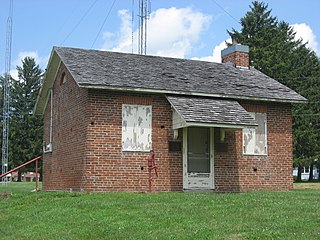
The Studabaker-Scott House and Beehive School are two historic buildings near the city of Greenville in Darke County, Ohio, United States. Located along State Route 49 south of the city, both are unusually well-preserved remnants of the architecture of the middle third of the nineteenth century.
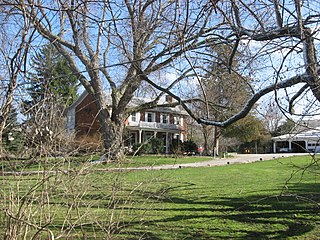
The Griffith Breese Farm is a historic farmstead in southern Allen County, Ohio, United States. Established in 1840, the farm is one of the oldest white settlements in a formerly Native American area of northwestern Ohio, and it has been designated a historic site because of its unusually good degree of preservation.
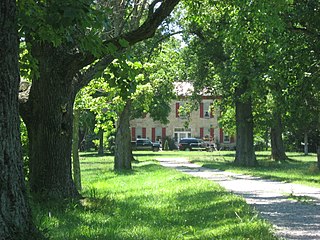
Oak Hill is a historic former farmhouse in the southern part of the U.S. state of Ohio. Located along Dun Road in Ross County, it is one of the finest examples of sandstone farmhouses in the vicinity of the city of Chillicothe.

The Mason House is a historic residence in the unincorporated community of Coal Run in Washington County, Ohio, United States. A saltbox built in 1802, it is among the most well-preserved buildings in Washington County constructed before Ohio's statehood in 1803.

The Walter Curtis House is a historic residence in far southern Washington County, Ohio, United States. Located south of Little Hocking, a community in southern Belpre Township, the house is a two-story structure constructed in 1827. Built of brick with elements of stone, it was the home of local politician Walter Curtis. During the nineteenth century, Curtis held such offices as Washington County Commissioner, associate judge, and Ohio state representative; his son Austin was later also elected to the Ohio House of Representatives.

The Cassius Clark Thompson House is a historic residence on the edge of downtown East Liverpool, Ohio, United States. Built in 1876 in a Late Victorian form of the Italianate style of architecture, it was built as the home of one of East Liverpool's leading businessmen.
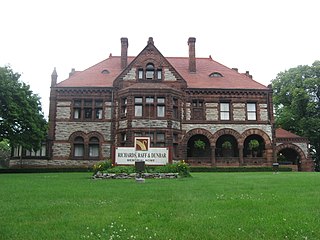
The East High Street Historic District is a cluster of mansions on the eastern side of Springfield, Ohio, United States. Located along one of Springfield's most important thoroughfares and once home to some of its most prominent residents, the cluster was named a historic district in 1974.
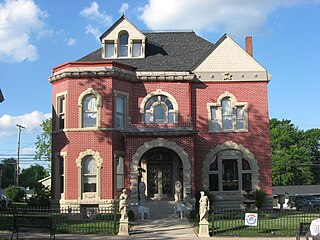
The Oram Nincehelser House is a historic residence in the village of Mechanicsburg, Ohio, United States. Built for a nineteenth-century local doctor, it has been named a historic site because of its distinctive architecture.

Mount Oval is a historic farmhouse in the south central part of the U.S. state of Ohio, south of the city of Circleville. Built in the 1830s, it was home to some of the region's more prominent farmers, and it has been named a historic site.
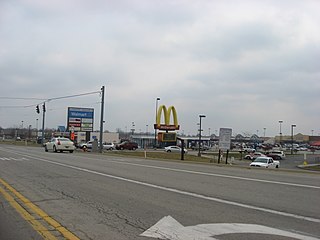
The William Burnett House was a historic farmhouse located near the city of Washington Court House in Fayette County, Ohio, United States. Constructed in the nineteenth century, it was once a masterpiece of multiple architectural styles, and it was designated a historic site because of its architectural distinction.























